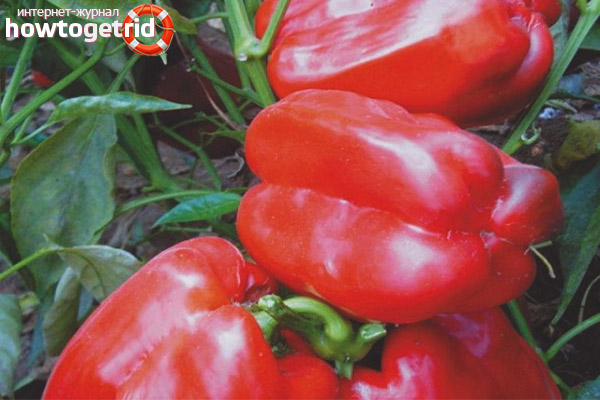The content of the article
Tolstosum is a mid-season variety of bell pepper. It is grown mainly in seedling method. The plant is resistant to most diseases and pests, has high palatability, has a high carotene content, the fruits ripen at the same time and are not injured during transport.
Grade description
Bushes are powerful, stocky, with a dense deciduous cover. The culture is very fruitful. With proper agricultural technology, up to five kilograms of fruit ripens on one bush. The fruits are thick-walled, with proper agricultural techniques reach 250 g.
It can be successfully grown both in open and in closed ground. Bell pepper feels uncomfortable in windy places, for this reason, greenhouse conditions will be preferable. Tolstosum pepper has a high sugar content, it can be used in conservation, consumed fresh.
Growing
Treat grains with fungicide and a non-concentrated solution of potassium permanganate. Such treatment will help to further avoid the appearance of fungal diseases.
Next, place the seeds on a damp cloth, let it swell. When planting, the seeds should not be deepened too deeply, as this can significantly slow down the development of the plant.
So that the seedlings do not outgrow, they begin to grow it 60 days before the intended planting in the ground or greenhouse. A common mistake of novice gardeners is that they begin to grow bell pepper too early.
Without artificial illumination, the plants are frail and will not produce the proper crop.
Do not rush to seedlings, you must wait until a sufficiently warm temperature is established, as the plants will not survive unexpected frosts.
Care
Watering is an important procedure. Pepper does not tolerate drought, but also does not favor excess water.
- The soil should not be allowed to dry, but it is not recommended to overdo it with watering, otherwise there is a risk of fungal diseases and decay of the plant.
- Watering should be done directly under the root, improper watering can lead to the appearance of sunburn on foliage and fruits.
- When watering, use warm water, a little wood ash can be added to it if desired.
- Do not neglect pinching. It will help direct all energy to the development of the fruit, and the non-vegetative mass of the bush.
- Trimming stepchildren can be done no more than once every ten days, otherwise you can seriously injure the plant.
- If pepper grows on poor soil, then it needs regular fertilizing with organic fertilizers.
- If desired, you can prepare herbal infusion. To do this, pour freshly cut grass into a barrel or other container, pour plenty of water into it, then leave the barrel alone for two weeks. After this, the infusion must be filtered, water them with pepper once a day.
- Mulch the aisles with mowed grass or sawdust to preserve water in the upper layers of the soil.
An important point is the loosening of the soil, pepper will not grow in too dense soil. But be careful when performing this procedure, do not damage the root system of the plant. Injuries to the roots will hinder the development of the bush for a long time.
Video: the most successful varieties of sweet pepper









Submit